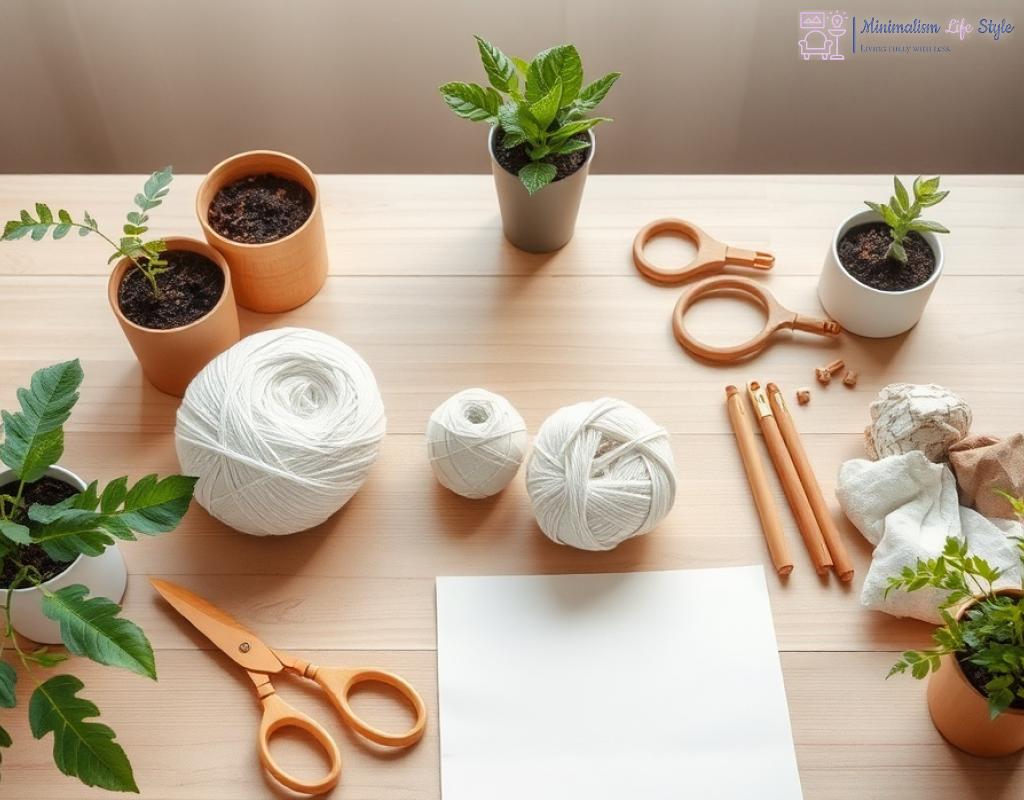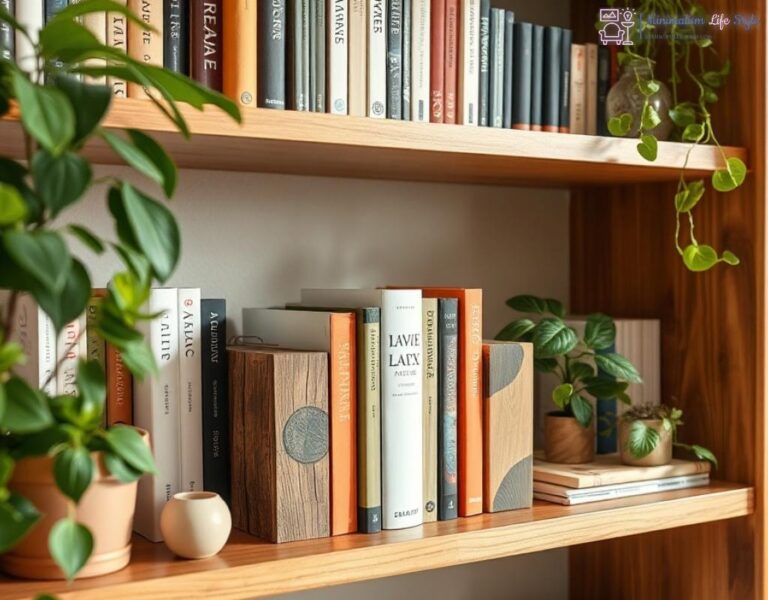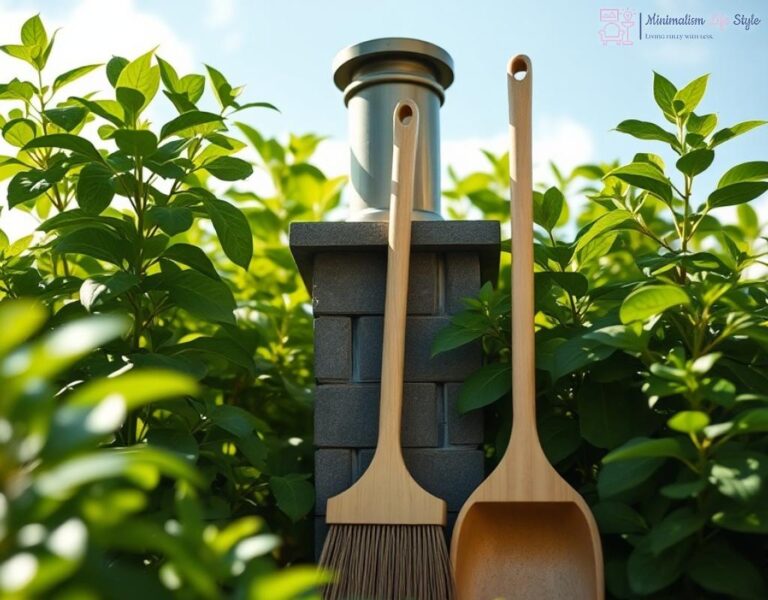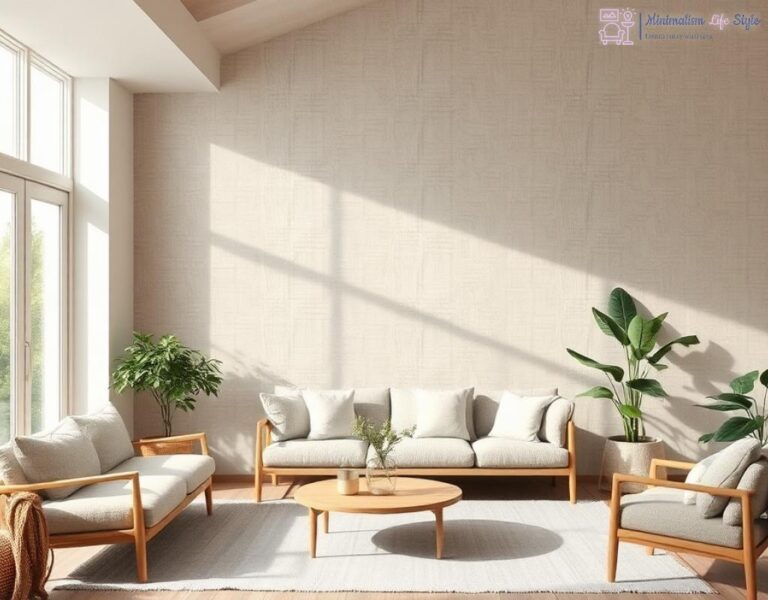Crafting with Purpose: The Art of Minimalism

In a world overflowing with choices, embracing minimalism in crafting can transform not only our projects but also our perspective on creativity. This approach encourages us to focus on quality over quantity, allowing artists to channel their resources into meaningful and intentional creations. By stripping away the excess, we can discover the true essence of our craft, fostering a deeper connection with materials and methods.
Curating a collection of craft supplies that aligns with minimalist and sustainable principles is essential for purposeful crafting. By selecting eco-friendly materials, crafters can reduce their environmental impact while still expressing their creativity. This section explores practical tips for building a minimalist craft supply stash that is both functional and environmentally conscious.
- Choose Quality Over Quantity: Invest in high-quality materials that will last longer and perform better.
- Opt for Recycled or Upcycled Materials: Look for supplies made from recycled content or repurpose items you already have.
- Limit Your Color Palette: Select a cohesive color scheme to simplify your crafting choices and enhance creativity.
- Buy in Bulk: Purchase supplies in bulk to reduce packaging waste and save money over time.
- Focus on Multi-Use Items: Select tools and materials that can serve multiple functions in various projects.
As we embrace the art of minimalism, exploring sustainable crafting techniques can further enhance our creative journeys. These methods not only promote environmentally friendly practices but also inspire innovative thinking and resourcefulness in our craft. Here, we delve into several sustainable crafting techniques that align with a minimalist ethos.
| Technique | Description |
|---|---|
| Natural Dyes | Utilize plants and natural materials to create beautiful, eco-friendly dyes for fabrics and papers. |
| Zero-Waste Crafting | Design projects that use every scrap of material, minimizing waste while maximizing creativity. |
| Digital Crafting | Incorporate digital tools for design and planning, reducing physical material consumption. |
| Collaborative Projects | Work with others to share resources and skills, fostering community and reducing individual material needs. |
Sourcing Sustainably: Where to Find Eco-Friendly Supplies
In the pursuit of eco-friendly creativity, the sourcing of sustainable craft supplies plays a pivotal role. Understanding where to find these materials can significantly enhance your crafting experience while ensuring that your projects align with your minimalist and environmentally conscious values. The journey towards sustainable sourcing not only supports ethical practices but also encourages a deeper appreciation for the materials we use.
One of the most effective ways to source sustainable supplies is to tap into local resources. Local craft stores often carry a selection of eco-friendly materials, from organic fabrics to recycled paper products. By supporting small businesses, you not only contribute to the local economy but also reduce the carbon footprint associated with shipping materials from distant places. Additionally, community workshops or craft fairs can be golden opportunities to discover unique, locally-sourced materials and meet fellow crafters who share your commitment to sustainability.
The internet opens up a world of possibilities for sourcing sustainable craft supplies. Numerous online platforms are dedicated to eco-friendly products, where you can find everything from biodegradable glues to sustainably sourced fabrics. These marketplaces often provide detailed information about the origin and production methods of their offerings, allowing you to make informed choices. Moreover, many of these platforms emphasize transparency and ethical practices, ensuring that your purchases contribute positively to the environment. It’s advisable to look for brands that prioritize minimal packaging and offer bulk purchasing options to reduce waste further.
Perhaps the most rewarding method of sourcing sustainable supplies is through repurposing and upcycling. This approach not only minimizes waste but also encourages creativity as you find new uses for items that might otherwise be discarded. Look around your home for materials that can be transformed into something beautiful—old clothes can become fabric scraps, glass jars can serve as storage for smaller materials, and even cardboard boxes can be reimagined into unique craft projects. This practice not only supports your minimalist lifestyle but also fosters a mindset of resourcefulness and innovation, essential traits for any crafter dedicated to sustainability.
Upcycling Wonders: Transforming Waste into Art
In the realm of sustainable crafting, upcycling stands as a beacon of creativity and resourcefulness. It invites crafters to look beyond the obvious and see potential in everyday waste. By transforming discarded items into stunning works of art, we not only reduce our environmental footprint but also cultivate a mindset that values innovation over consumption. This article delves into the transformative power of upcycling, offering insights into how you can turn the mundane into the magnificent.
Everyday objects, often overlooked or deemed as trash, hold untapped potential waiting to be discovered. Upcycling encourages us to reimagine these items, giving them a new lease on life. From glass bottles morphing into chic vases to old furniture being reborn as trendy decor, the possibilities are limitless. The act of repurposing not only fosters creativity but also ignites a sense of accomplishment as we witness our creations come to life.
To inspire your upcycling journey, here are some innovative techniques that can help transform waste into art:
- Fabric Scraps: Combine various fabric remnants to create patchwork quilts or unique bags.
- Glass Jars: Decorate with paint or twine to turn them into stunning candle holders or storage containers.
- Cardboard Boxes: Cut and assemble them into custom organizers or eye-catching sculptures.
- Plastic Bottles: Craft into planters or bird feeders, adding a touch of nature to your home.
- Old Books: Transform pages into art by creating intricate paper flowers or wall decor.
These techniques not only showcase your creativity but also demonstrate how easily we can shift our perspective on what constitutes a valuable resource in crafting.
Joining forces with fellow crafters can amplify the impact of upcycling. Community workshops and events focused on upcycling offer an excellent platform to share ideas, resources, and techniques. Collaborating with others not only expands your skillset but also cultivates a supportive network that fosters creativity and sustainability. By engaging in these communal efforts, you contribute to a culture that values resourcefulness, inspiring others to rethink their consumption patterns.
Mindful Materials: Choosing Non-Toxic Crafting Options
In our journey towards sustainable crafting, one of the most crucial steps is the selection of non-toxic materials. Craft supplies often contain chemicals and substances that can be harmful to both our health and the environment. By making informed choices, we can significantly reduce our ecological footprint while nurturing our creativity. This section delves into the realm of mindful materials, showcasing how you can embrace safe and eco-friendly options in your crafting endeavors.
Non-toxic materials are those that do not contain harmful chemicals that pose health risks to users or the environment. When selecting crafting supplies, it is essential to familiarize ourselves with the labels and descriptions that denote safety and eco-friendliness. Here are a few types of materials that are typically considered non-toxic:
- Water-Based Adhesives: Unlike traditional glues that may emit harmful fumes, water-based adhesives offer a safer alternative with minimal environmental impact.
- Natural Paints: Opt for paints made from plant-based ingredients, which are free from volatile organic compounds (VOCs) and are safer for indoor use.
- Organic Fabrics: Choose textiles made from organic cotton or hemp, which are cultivated without harmful pesticides and chemicals.
When it comes to selecting materials, it is essential to read labels carefully and research brands that prioritize non-toxic ingredients. Look for certifications such as Green Seal or OEKO-TEX, which indicate that products meet strict environmental and safety standards. By opting for reputable brands that align with our values, we not only protect our health but also support companies dedicated to sustainable practices.
Another significant aspect is to engage with your local crafting community. Sharing knowledge about non-toxic options can help create a ripple effect, encouraging others to make conscious decisions about their materials. Workshops, social media groups, and local craft fairs can be excellent platforms for discussion and education, fostering a culture of mindful crafting.
Upcycling offers an innovative way to incorporate non-toxic materials into your crafting projects. By creatively repurposing items you already have, you can avoid the need for new supplies that may contain harmful substances. Here are some creative upcycling ideas that focus on non-toxic principles:
- Glass Jars: Transform them into beautiful storage solutions or art pieces using non-toxic paint.
- Old Fabric: Create patchwork items while ensuring the fabrics are free from harmful dyes and chemicals.
- Cardboard: Craft organizers or decorations using cardboard, avoiding adhesives that contain toxins.
By adopting these strategies, we can not only embrace a minimalist approach but also cultivate a crafting environment that prioritizes health and sustainability. The beauty of eco-friendly creativity lies in its ability to inspire us to think beyond the conventional, fostering a crafting culture that is both safe and innovative.
The Joy of Less: Simplifying Your Crafting Space
In the ever-evolving world of crafting, the adage ‘less is more’ resonates more profoundly than ever. Embracing a minimalist approach not only enhances our creativity but also streamlines our crafting experience. By simplifying our crafting space, we can foster an environment that promotes focus and inspiration. This transformation allows us to engage more deeply with our materials and projects, ultimately leading to a more joyful crafting journey.
Imagine walking into a crafting space that feels open and inviting, where every item has its place and purpose. The first step towards achieving this is to evaluate your current supplies and identify what truly sparks joy. It is essential to recognize that the goal is not to eliminate everything but rather to curate a collection of meaningful materials that align with your creative vision.
Curating involves more than just organizing; it’s about making intentional choices regarding what supplies to keep. Begin by categorizing your materials into groups based on their function and frequency of use. For instance, create a section for essential tools, another for frequently used materials, and a separate area for projects in progress. This method not only enhances accessibility but also creates a visual harmony that can be inspiring.
As you sift through your supplies, ask yourself critical questions: Does this material serve a purpose? Will I realistically use this item in the near future? By being honest with yourself, you can create a space that reflects your current crafting goals. A minimalist approach encourages us to let go of the excess, paving the way for a more focused and enjoyable crafting experience.
The art of simplification extends beyond merely reducing clutter; it involves designing a functional environment that fosters creativity. One effective way to achieve this is by incorporating versatile storage solutions. Consider using transparent containers that allow you to see your supplies at a glance. This not only saves time but also minimizes the frustration of searching for materials.
Moreover, integrating natural elements such as plants or light can enhance the ambiance of your crafting space. Studies have shown that a well-lit and vibrant environment can boost creativity and productivity. If possible, position your crafting area near a window to harness natural light, or opt for warm-toned lighting to create a cozy atmosphere.
| Benefit | Description |
|---|---|
| Enhanced Focus | Eliminating distractions allows for deeper engagement with your projects. |
| Increased Creativity | A simplified space promotes inspiration and new ideas to flow freely. |
| Reduced Stress | A tidy environment can lead to a more tranquil crafting experience. |
Ultimately, the joy of less is about embracing a lifestyle that values quality over quantity. By simplifying your crafting space, you not only create a more enjoyable creative experience but also contribute to a sustainable future. Remember, every item you choose to keep should ignite a sense of purpose and inspiration, allowing your creativity to flourish while remaining mindful of the environment.




